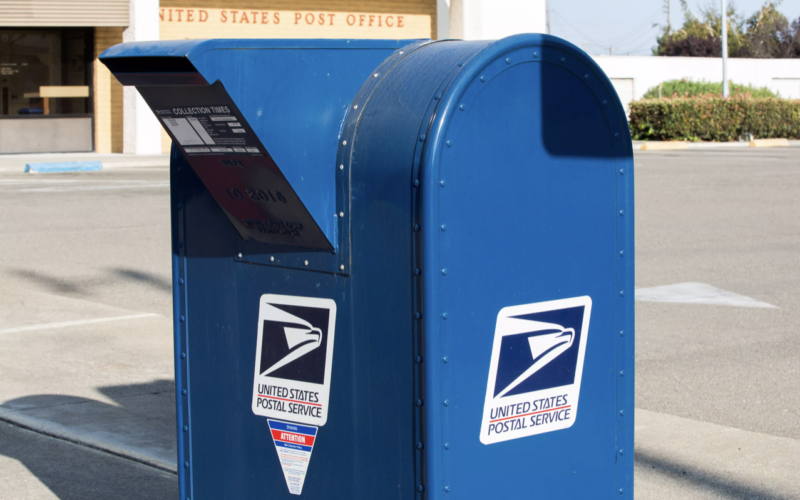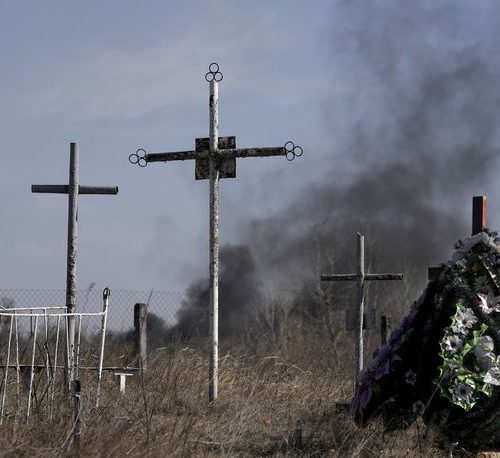Laura Michelle Davis | CNET.Com
Troy Warren for CNT #EditorsPicks
Millions of Americans who rely on the US Postal Service are about to face longer wait times and higher prices with a new plan next month.
If you’re like me, sending a letter or package across the country through the US Postal Service feels like a game of chance. Will it get there in a week — or two? During the first quarter of this year, around 20% of first-class mail across the US was delivered late. And now snail mail is about to get slower for some of the 160 million residences and businesses that rely on the Postal Service.
Starting Oct. 1, the USPS will implement new service standards for its first-class mail and packages, lengthening delivery time for about 30% of its volume. That means some letters, parcels and magazine subscriptions traveling longer distances could take up to five days to arrive, instead of two or three days. The changes are part of a 10-year plan called Delivering for America to overhaul the agency and try to tackle its $160 billion debt. The plan would also reduce post office hours and raise prices for customers, and there’ll be even more postage hikes during the peak holiday season.
Every hour, an average of 17.7 million mail pieces are processed and delivered by the USPS, a portion of which are packages from online retailers like Amazon. But there’s been a massive decline in the volume of first-class mail like letters, cards and bills as Americans rely more and more on electronic payments and communication. And with the rising demand of e-commerce, the agency is struggling to match the quick delivery of competitors like UPS, FedEx and even Amazon itself, which has its own delivery network.
What do the USPS’ service changes mean for you? Costlier or erratic mail delivery could lead to delays in wedding invitations or even late unemployment checks or child tax credit payments. Below, we’ll explain the major changes you should know about, who the USPS price hikes and delays could affect most, what to do if you’re facing a USPS holdup, and what options you have to send mail.
What is involved in the USPS’ new cost-cutting plan?
The Postal Service has said it’s struggling to meet high performance standards, and it’s been financially underwater for a while now. The COVID pandemic exacerbated the USPS’ sluggish service and cash crisis, as staffing shortages collided with both the surge of online buying for essentials and the influx of 2020 election ballots.
One way the USPS plans to reduce costs is by using fewer airplanes to ferry mail and instead use more trucks, which can deliver a higher volume of mail for less money. Ground transportation is also more reliable than air in all seasons, according to the USPS.
The Postal Service’s 10-year plan also includes a multibillion dollar contract to modernize the now ancient delivery vehicle fleet, with the new trucks appearing on carrier routes in 2023. There are also proposed investments in equipment and infrastructure to help transport the growing volume of packages more efficiently, as well as upgrades to postal facilities.
When asked for comment, a USPS spokesperson said the new service standards will increase delivery reliability, consistency and efficiency for customers.
However, some critics wonder why the agency would opt to slow down mail when it’s already struggling to deliver mail on time. The Postal Regulatory Commission issued an advisory opinion on July 20 that found that the estimated annual cost savings for the USPS’ proposed service standard changes won’t, in fact, lead to “much improvement” of the agency’s current deficit woes.

How are first-class mail and package services affected?
Not all first-class mail will be affected by the new service standards. Here’s how it breaks down.
First-class mail (standard-size, single-piece letters and envelopes): The USPS says 39% of mail will now be delivered in three to five days, depending on the distance between origin and destination. The rest (61% of local mail) will be unaffected and will be delivered in one to two days.
First-class package service (smaller, lightweight parcels): The Postal Service says 32% of packages will now be delivered in four to five days, with the longest distances having the longest timetable (such as between California and New York). The remainder (68% of packages) will still be delivered in two to three days.
Periodicals (journals, magazines, newspapers): The USPS says only 9% of publications will now be delivered in up to five days, and 93% will still be delivered in two days or less.
What actually causes USPS delivery delays?
There are many reasons why there might be a holdup with your Postal Service mail, and many times it’s not what you’d expect. Here are some of the most common reasons for mail delays.
- Weather: Postal delivery disruptions could be due to severe winter storms, floods, natural disasters or power outages. Customers can check weather-related delays on the Service Alerts page on the USPS website.
- Holidays: The holiday season is the busiest time for the Postal Service, and the spike in parcel volume can cause delays if the agency isn’t able to deal with the amount of rush purchases through retailers. One way to avoid this is to prepare early and avoid last-minute gift buying.
- Wrong address: Sometimes a recipient gives the wrong address, or there’s a typo in the delivery address, from missing an apartment number to an unreadable street name.
- Notification slip missing: If the USPS wasn’t able to deliver your mail because no one was there to receive it, or there wasn’t a safe place to leave it, you might get a notice telling you your package is at the nearest post office. However, if that slip gets lost, you’ll have no way of tracking down the package.
There was also the pandemic, which affected postal employees, as it did members of other workforces. Employees had to follow social distancing guidelines, quarantine restrictions and safety protocols, leading to interruptions in the processing and delivery of mail. At the same time, there was a significant rise in parcel volume because of the lockdowns, and certain facilities were so overwhelmed that they simply stopped accepting mail.
Last summer, letter carriers, who customarily make multiple delivery trips to ensure timely distribution of mail, had been instructed not to make any extra trips and to just leave mail behind at distribution centers, The Washington Post reported.

Who will be most affected by the USPS delivery slowdown?
Individuals and businesses will face longer delivery times for both outgoing and incoming mail that needs to travel by postal truck for farther distances. So the changes will especially impact those sending letters or packages from coast to coast — and also to and from Alaska, Hawaii, Puerto Rico and other US territories that’ll still need to rely on air transportation.
Delays in first-class mail could also affect customers unevenly depending on the ZIP code. According to the Washington Post, the plan will disproportionately affect Western states and parts of Texas and Florida, for example. Also, rural communities, low-income families and seniors tend to depend more on the Postal Service.
Mail delays are a burden for those who risk fees or penalties for late rent checks or bills. They’re also worrisome for those waiting for payments or important documents to arrive by post. (We recommend you give yourself a healthy window to send important documents, or confirm that mail sent by a specific post date will be accepted by your recipient.)
Delivery lags could even be a matter of life and death for some people who depend on a mail-order medication system. Already during the pandemic, many people opting to receive prescriptions at home faced problems receiving their life-saving medicine on time through the USPS.
What’s happening with higher postage and delivery prices?
On Aug. 29, the Postal Service raised the price of a first-class stamp from 55 to 58 cents. That means Forever stamps now cost three cents more. (You can get a cool, personalized design from the post office or from usps.com.) But because Forever stamps never expire, the ones you bought in 2020 — or any prior year — remain valid even though the postage rate has gone up.
Other first-class standard-size mail and large envelopes, including presort letters like bills and statements, and newspapers and magazines had a price increase, as did media mail such as books. The prices for special services like certified mail and money order went up as well.
And the USPS also announced a temporary price increase on commercial and retail domestic package shipments for the 2021 peak fall and holiday season, in effect Oct. 3 through Dec. 26. The price increases range from 25 cents to $5 per package on priority mail, priority mail express and first-class package service and are detailed in this USPS statement.
According to the agency’s plan, there could be more price increases over the next decade. Though adding a couple of cents to send a birthday card might not burn a hole in your pocket, even a small increase could be ruinous for businesses that send a ton of mail or companies that depend on mass mailings.
What are other options for making sure mail arrives on time?
A USPS representative said that customers can still use Priority Mail Express and Priority Mail services with a one-to-three-day standard to ship letters, larger envelopes or packages within the contiguous United States. However, if you plan to use regular first-class mail or package service, the USPS recommends that you plan ahead and send your mail early in order for it to reach its destination on time.
Another option is to compare rates and delivery estimates with competing carriers, like FedEx or UPS.
What should I do if my USPS package is lost?
When sending or receiving a letter or parcel with the Postal Service, keep in mind that delivery estimates are just that — estimates and not guarantees. The only USPS service that offers a money-back guarantee for delivery within a two-day window is Priority Mail Express. So unlike first-class mail or regular priority, you’ll actually get a refund for a late delivery.
If you’re waiting on a letter or package that has an incorrect address or was stuck in a weather-related delay, the only way to intercept or reroute it is with a USPS tracking number. Some Postal Service offerings automatically include tracking, but if you need it for first-class mail or media mail, you’ll have to pay an additional fee. According to the USPS, adding a tracking service doesn’t expedite or guarantee delivery. It just makes it possible to find your item if it’s lost.
If you feel like you’re experiencing an atypical delay and you think your mail has gotten lost, you can submit a missing mail search request, and the USPS will try to locate it.
In Other NEWS



































